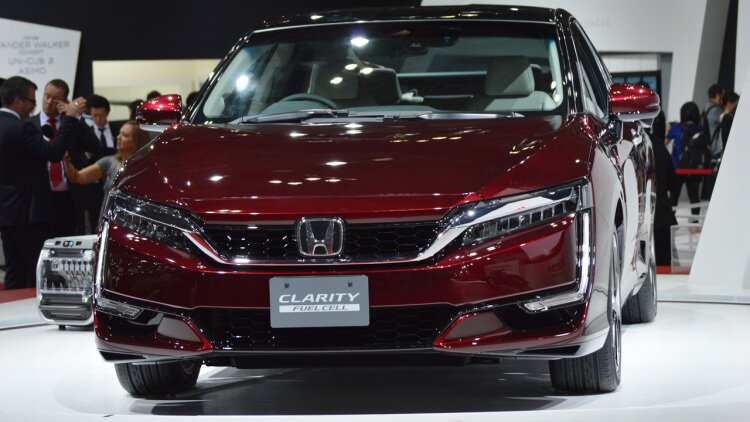Fossil fuels are fast depleting and the automotive industry is rapidly adapting to stricter emission norms and regulations. As such, most cars these days feature smaller displacement engines that produce an increased power output via turbocharging or supercharging.However, in the coming decades, fossil fuels are soon expected to run so low that it might prove far too expensive or even non-existent in some areas. Some manufacturers have already begun research and development into alternate energy sources for cars to ensure their survival in the future. Although electricity is currently the most popular alternate energy source, car makers are still looking for new technologies that provide good range at low costs. We take a look at some of the more obscure but equally relevant fuel sources manufacturers are currently exploring.
Hydrogen Fuel Cell
Hydrogen was a major element in the construction of zeppelins during the late 1800’s and early 1900’s due to its lightweight properties and simple production techniques. However, the gas was far too volatile and resulted in numerous accidents including the infamous Hidenburgh disaster. The major accident coupled with the poor political and economic conditions of the world during that time resulted in the fall of Zeppelins.

Recent advancements in fuel cell technology have resulted in hydrogen resurfacing as a viable fuel source due to its high energy output. Honda, one of the giants of the industry is a major proponent for hydrogen fuel cell technology. The car maker also showcased a production ready model of its Clarity Fuel Cell Concept late last year. The car, expected to be priced around 60,000 USD prior to tax rebates and dealership discounts will be the very first of its kind to hit mass production.
Unlike Toyota’s “look at me” philosophy for its popular hybrid, Honda has adopted a more restrained design language for its Clarity sedan. The Japanese four door saloon is an elegant sedan that draws inspiration from the Honda NSX and the more accessible Accord. Similar to conventional automobiles the Honda sedan’s main source of energy rests within the bonnet of the car. Producing 175 hp and offering 300 miles (483 km) of range between refills, the Japanese hydrogen powered sedan truly is a alternative to traditional fossil fuels. However, the lack of stations around cities still proves to be a major downside.
Biodiesel
Biodiesel can refer to two things, vegetable oil or animal fat based diesel. Biodiesel is unique in the fact that it can be used in conventional diesel engines without any modifications whatsoever. As such, the biodiesel holds a major plus point against most other fuel sources on this list. However, biodiesel does have its drawbacks such as increased wear and tear within the engine, increased viscosity and lower fuel economy.

Ethanol
Ethanol is another type of biofuel which is an alcohol created during the process of fermentation of corn, sugarcane and other starch crops. Similar to biodiesel, bioethanol too can be used in regular engines without the need for any mechanical changes. One of the most extreme cars capable of an increased power output with bioethanol as its fuel source is the Koenigsegg Agera.

LPG
LPG or Liquid Petroleum Gas is a popular alternative to petrol and diesel here in India. Overseas however, the scene is very different. While LPG is a relatively cheaper option when compared to petrol or diesel in this country, the same is not the case for coutries such as the US, UK and Middle East. With fossil fuel prices so low, retro fitting LPG kits to use more expensive fuel is currently not viable.

CNG
CNG, otherwise known as compressed natural gas mainly comprises of methane. It is far safer than petrol and diesel in terms of the exhaust chemicals produced and in the case of spillage as CNG is lighter than air, it disperses quickly. However, the use of CNG requires large amounts of storage space for its tank and most retro-fitted units occupy most of the space in the trunk of the car. Certain manufacturers already offer CNG as a variant of some of their cars in their lineup that eliminate this issue by placing the tank underneath the body of the vehicle. CNG is a commonly used source of fuel in South America and Asia. However, countries such as Belgium, Germany and Turkey are also proving to be major markets for such vehicles as the cost of CNG is far lower than petrol or diesel.

Compressed Air
Compressed air powered systems have been around for decades now. However, the inefficiency of such engines resulted in the vehicles being used only as concepts. In recent years however, compressed air has gained momentum once more with Peugeot showcasing their Citroën Hybrid Air concept at the 2013 Geneva Motor Show.
